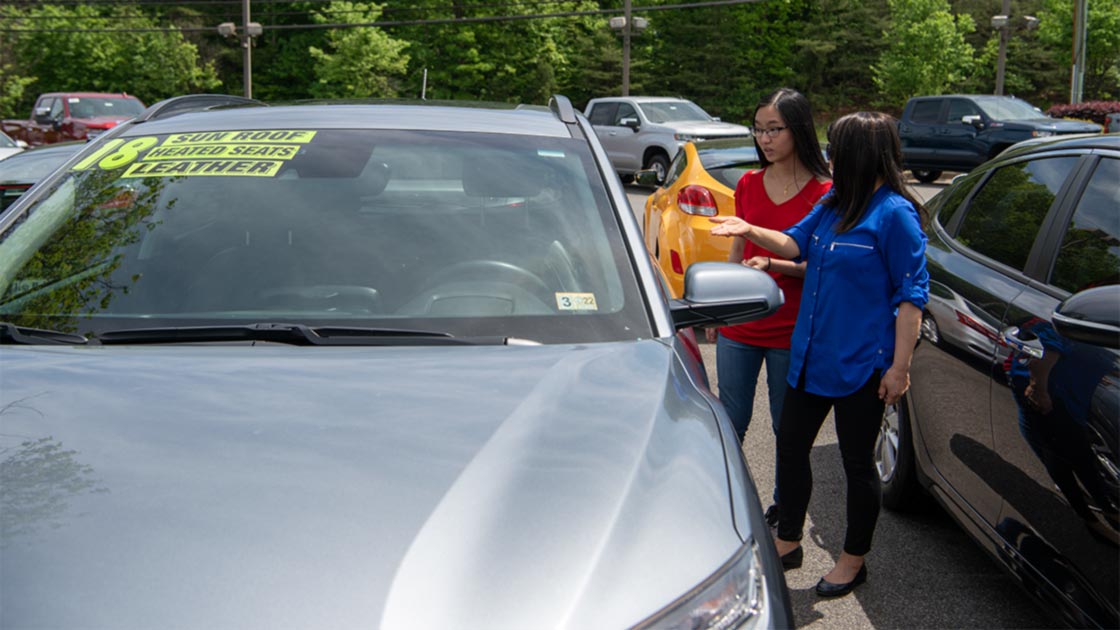List of recommended teen vehicles shrinks for 2022 but still offers a variety of options
May 26, 2022

Supply constraints have made purchasing a new or used vehicle at the right price a challenging and time-consuming process. The task is even trickier when you’re looking for a vehicle for a young driver.
Marketplace realities have shrunk the list of recommended vehicles for teens compiled by the Insurance Institute for Highway Safety (IIHS) and Consumer Reports (CR). But, as this year’s recommendations show, there are still a variety of affordable used and new models with a high level of safety and reliability.
This year’s recommendations highlight 49 used models, starting from $6,000 to $19,900. That compares with 61 used models in 2021 and 65 in 2020. Families that want to buy a new vehicle can choose among 21 models recommended for young drivers, ranging in base price from $21,200 to $38,900. That’s fewer than the 29 new models recommended last year but more than the 18 recommended in 2020.
“We know firsthand how difficult it is to find the vehicle you want these days because we buy most of the vehicles that we crash-test from dealers just like everyone else,” says IIHS Chief Research Officer David Zuby. “We hope this list takes some of the stress out of car shopping by identifying lots of safe, reliable options at reasonable prices.”
“As the pandemic has altered both the way people travel and the way they spend, demand for reliable used cars is notably high — meaning it may be more challenging to make your budget meet your needs,” says Jennifer Stockburger, director of operations at CR’s Auto Test Center. “This list is designed to help you stretch your dollars further.”
Although the recommendations are intended specifically for young drivers, they can be a resource for anyone looking for a safe, reliable and affordable vehicle. The new-vehicle section is especially useful for parents of younger children who might be buying a vehicle for their own use with an eye toward handing it down to a new driver in the future.
Consumers who consult the list won’t find any sports cars or other vehicles with excessive horsepower. These vehicles make it too easy to speed and can sometimes entice young drivers to show off. In addition, there are no minicars or vehicles under 2,750 pounds because small, light vehicles don’t provide enough protection in multiple-vehicle crashes. The biggest, heaviest vehicles, including those in the large SUV class, have also been left off the list because they can be hard to handle and often have increased braking distances.
The list of recommended used vehicles is divided into Best Choices and Good Choices. Best Choices offer a slightly higher level of safety. This year there are 32 Best Choices and 17 Good Choices. Both groups have:
- standard electronic stability control
- above-average reliability, based on CR’s member survey, for the majority of the years listed
- average or better scores from CR’s emergency handling tests
- dry braking distances of less than 145 feet from 60 mph in CR’s brake tests
- good ratings in four IIHS crashworthiness tests — moderate overlap front, original (31 mph) side, roof strength and head restraints
- four or five stars from the National Highway Traffic Safety Administration (if rated)
In addition, the Best Choices have a good or acceptable rating in the IIHS driver-side small overlap front test, which was launched in 2012. The test replicates what happens when the front left corner of a vehicle collides with another vehicle or an object like a tree or utility pole.
The top tier of used vehicles also excludes vehicles that have substantially higher than average insurance claim rates under medical payment or personal injury protection coverage. Both coverage types pay for injuries to occupants of the insured vehicle. The Highway Loss Data Institute, an IIHS affiliate, collects and publishes insurance loss data by make and model every year. The results are adjusted for driver age, gender and other factors that could affect risk.
The recommended new vehicles offer an even higher level of safety. All of them are winners of the 2022 IIHS Top Safety Pick or Top Safety Pick+ award, meaning they have good ratings in six of the Institute’s crashworthiness tests — driver- and passenger-side small overlap front, moderate overlap front, original (31 mph) side, roof strength, and head restraints — as well as advanced or superior ratings for front crash prevention and acceptable- or good-rated headlights.
Only 2022 vehicles that come with vehicle-to-vehicle automatic emergency braking as standard equipment are included in the recommendations. In cases in which acceptable or good headlights aren’t standard, the list specifies the qualifying trim levels and options.
The new models are vehicles that CR has judged to be at the top of their respective classes. They have average or better predicted reliability, and they meet the same criteria for emergency handling as the used vehicles. Compared with the used vehicles, they are held to a tighter braking distance requirement of 140 feet. They also receive a rating of good or better from CR for ease of use of their controls.